Deplaning at Nassau’s Lynden Pindling International Airport I was struck by the fact that we weren’t immediately shunted into some interior, ground-level corridor with drop ceilings and matte walls for the walk to border control. Instead, arriving U.S. travelers follow a window-lined path through a double-height corridor to customs and their arrival to the Bahamas.
It was a bright, if maybe not grand, welcome to the Caribbean.
And, in a great blend of art and wayfinding, Keisha Oliver’s “Royal Welcome” statue of a Bahamian traffic officer directs travelers into the customs hall.
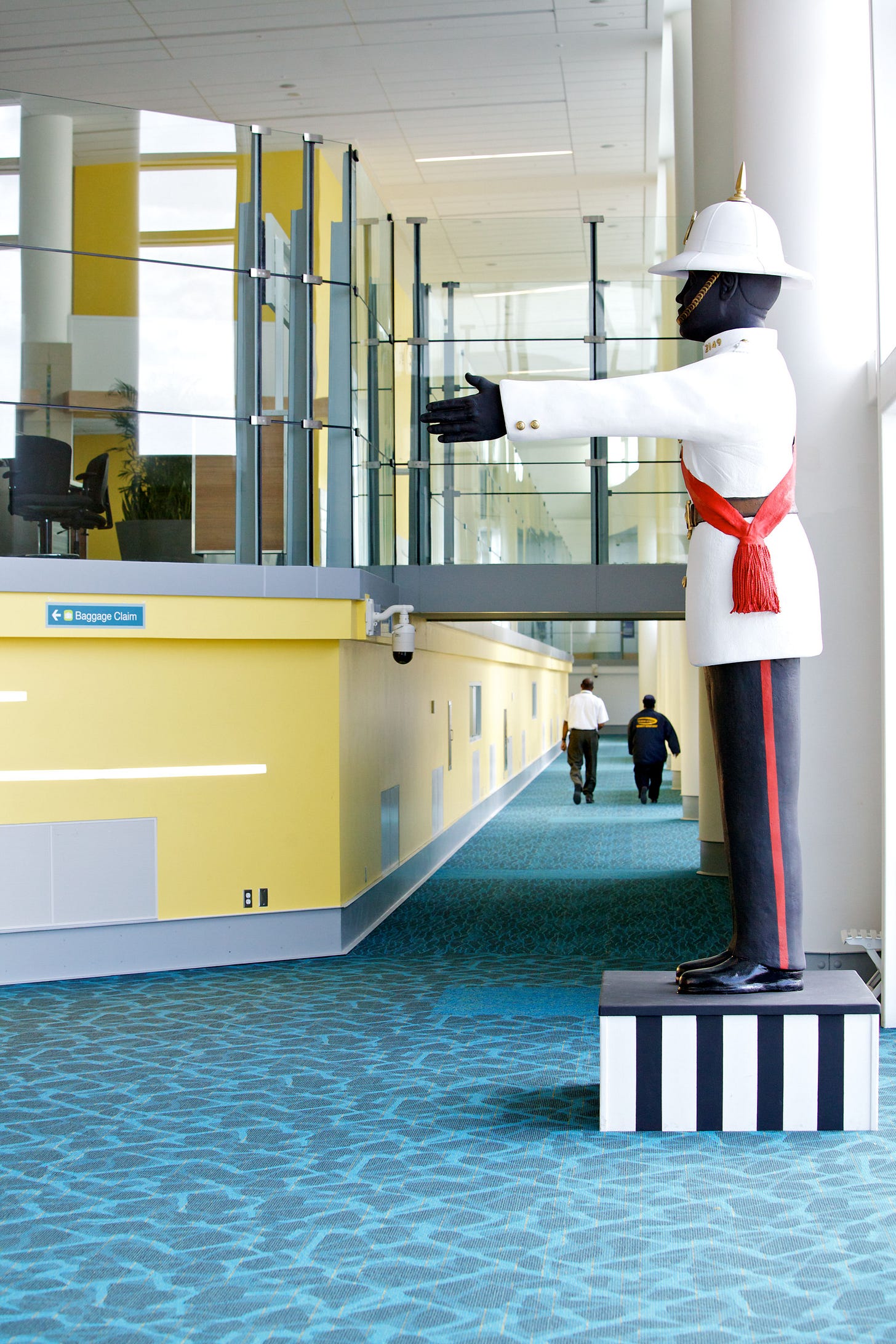
As an infrequent traveler to the Caribbean, I admittedly have little experience with airports in the region. And most of those experiences were underwhelming. The dark duty free area and low ceilings in concourses B and C at San Juan’s Luis Muñoz Marin International Airport are depressing; Concourse A is airy but the yellow-tinted up lights gives it confined feel; and Concourse D (the former home of American Airlines’ defunct hub) is just a fortress. I do love the mid-century facade that is, sadly, on a little-used portion San Juan’s terminal.
And do not get me started on Cancun International Airport.
I’m sure there are lovely airports in the Caribbean, I just have not seen them. Hence my pleasant surprise arriving in Nassau.
The 14-gate terminal in Nassau opened in phases from 2011 through 2013. It was designed by Stantec for Vantage Airports that manages the airport. The facility replaced a World War II-era terminal that, as Nassau Airport Development Company Vice-President of Maintenance and Engineering Kevin McDonald told me, was dated to say the least.
“I remember walking through the terminals and we used to have garbage cans in place to collect the rainwater,” he said at the recent Routes Americas conference in Nassau.
Gone are the rain buckets and in is a building that is both resilient — Nassau is situated in a hurricane zone — and tastefully designed if not grandiose.
The barrel vaulted landside buildings and curbside canopies is a striking feature that greets travelers as they either exit the arrivals hall or arrive on the departures curb. Designed to mimic ocean waves, as McDonald described them, they provide a much grander aesthetic1 than than an unadorned, flat canopy (or space frame awning as in the old terminal).
McDonald described other local aspects of the airport’s design:
“From a design standpoint, there are a lot of cues in the terminal design that is reflective of the Bahamas and its culture. When you look at the marble stone cladding on the exterior walls, on the building envelope, that’s to reflect our limestone infrastructure. When you come in the terminals, especially the check in hall, you’ll see that the floors have coral mixed into the tile, again, also to reflect our culture. Then, when you look at the wall colors throughout the terminals, they’re reflective of our national flag — you’re going to see some gold, some aquamarine. It was really, really well thought out.”
And then there’s the Bahamian art throughout the terminal, from the aforementioned “Royal Welcome” in the arrivals corridor to the Tree of Life sculpture and fountain outside the terminal and other statues and art inside.
For all of the art and local flourishes — certainly more than at the other Caribbean airports I’ve experienced — the U.S. departures hall is mediocre. Concessions are standard for airports catering to tourists (primarily, but not entirely, chain restaurants). The waiting areas, where there is little art, are bland. Seating is row upon row of unimaginative tandem benches. And, while the walking distances are not long, the corridors and holdrooms feel small for the airport’s size.
I did depart from Nassau in the pre-dawn dark of early February and was not able to experience the departure spaces in full daylight.
Nassau handled just over 4 million passengers last year, airport data shows. That’s on par with 2019 levels and makes it the fifth busiest airport in the Caribbean. The terminal is designed for roughly 5 million annual travelers.
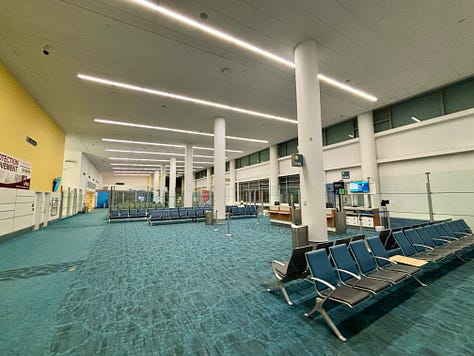

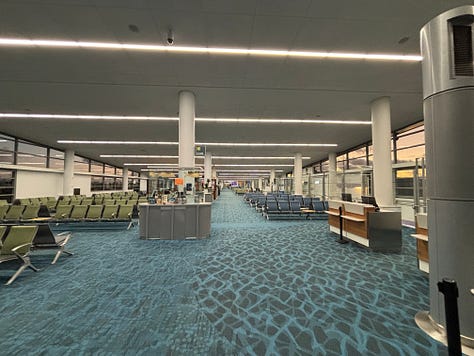
I was hoping for more from the departures hall in Nassau. I stand by the idea that these spaces can, and should, be interesting for travelers. It does not take much to enliven an otherwise simple space; a variety of seating can go a long way, just look what Grand Rapids did with what is otherwise a relatively corporate-feeling gate area.
Or, as Progressive Architecture wrote in May 1953: “If the designer approaches [the waiting area] with the passenger's comfort in mind, he is certain to achieve a much more successful end product than the one who merely provides the absolute essentials without taking the passenger into consideration.”
The Nassau airport does the arrivals and landside experience well. That’s where the most interesting art is, and those wave-like barrel vaults. It is not a very transparent structure but, given the security concerns2, that is not surprising.
It’s those in between moments of air travel, the waiting before your flight after customs and security — and, we all know, there can be a lot of waiting — where the design falls flat. Like the black-and-white idyllic 1950s town in the 1998 film Pleasantville that is, well, pleasant but not much else.
But for the design’s short-comings, sometimes we need to grade an airport on something of a curve. Eliminating the need for trash cans to collect water during storms is a huge step up. The same goes for getting rid of dark, drop-ceilinged corridors; cramped, space-framed waiting areas; and concessions that look more like a corner bodega than a contemporary retailer (the airport has a series of then and now photos on its website). These are not small improvements.
And then there is the outdoor patio in the departures area that is an amenity travelers — myself included — seek out at airports but was sadly closed at the time of my early departure.
“It allows our guests, the traveling public, to have a few more minutes to soak up that beautiful sunshine before departure,” said McDonald. Next time.
My travel to and from Nassau for the Routes Americas conference was provided by Routes.
An aside on San Juan, part of the terminal has what looks like was once a beautiful barrel-vaulted facade that, unfortunately, is mostly obscured by various modern additions and difficult to see.
Nassau is one of the few airports around the world with a U.S. Customs and Border Protection Preclearance facility that allows U.S.-bound travelers to clear customs before boarding their flight. That facility, plus the security checkpoint, can make it difficult for airport architects to design a transparent structure like Terminal B at New York LaGuardia or Stansted in London.




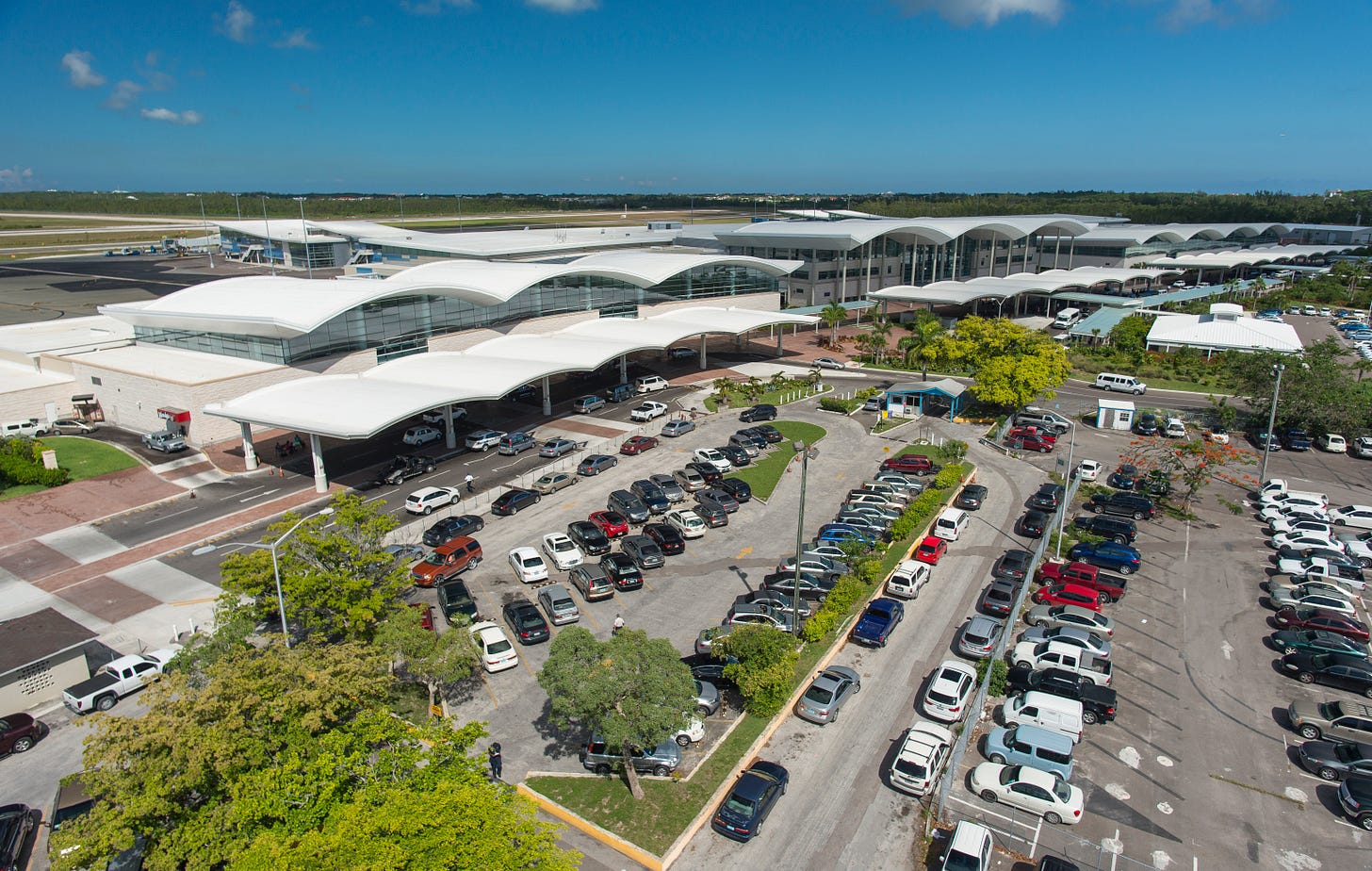
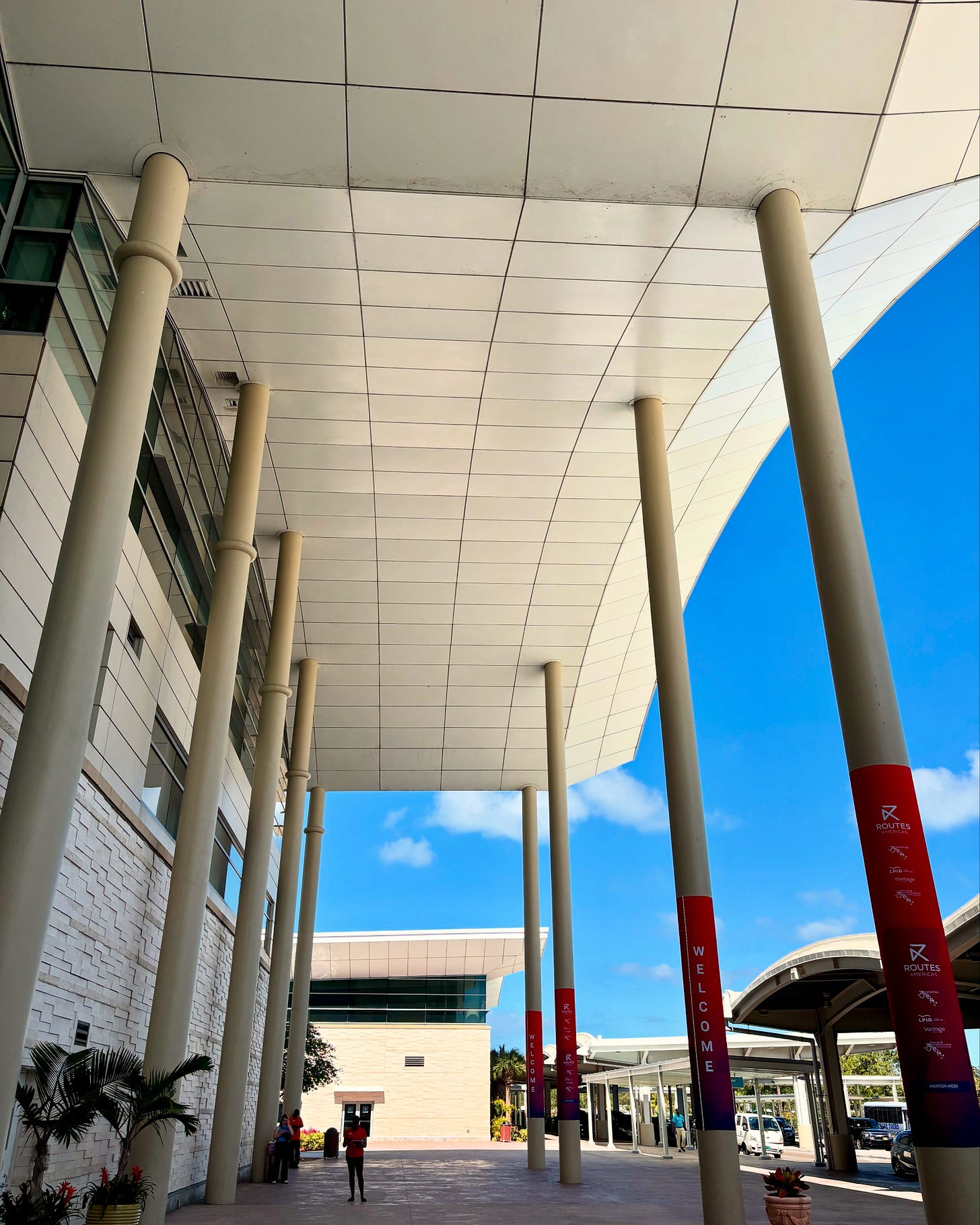
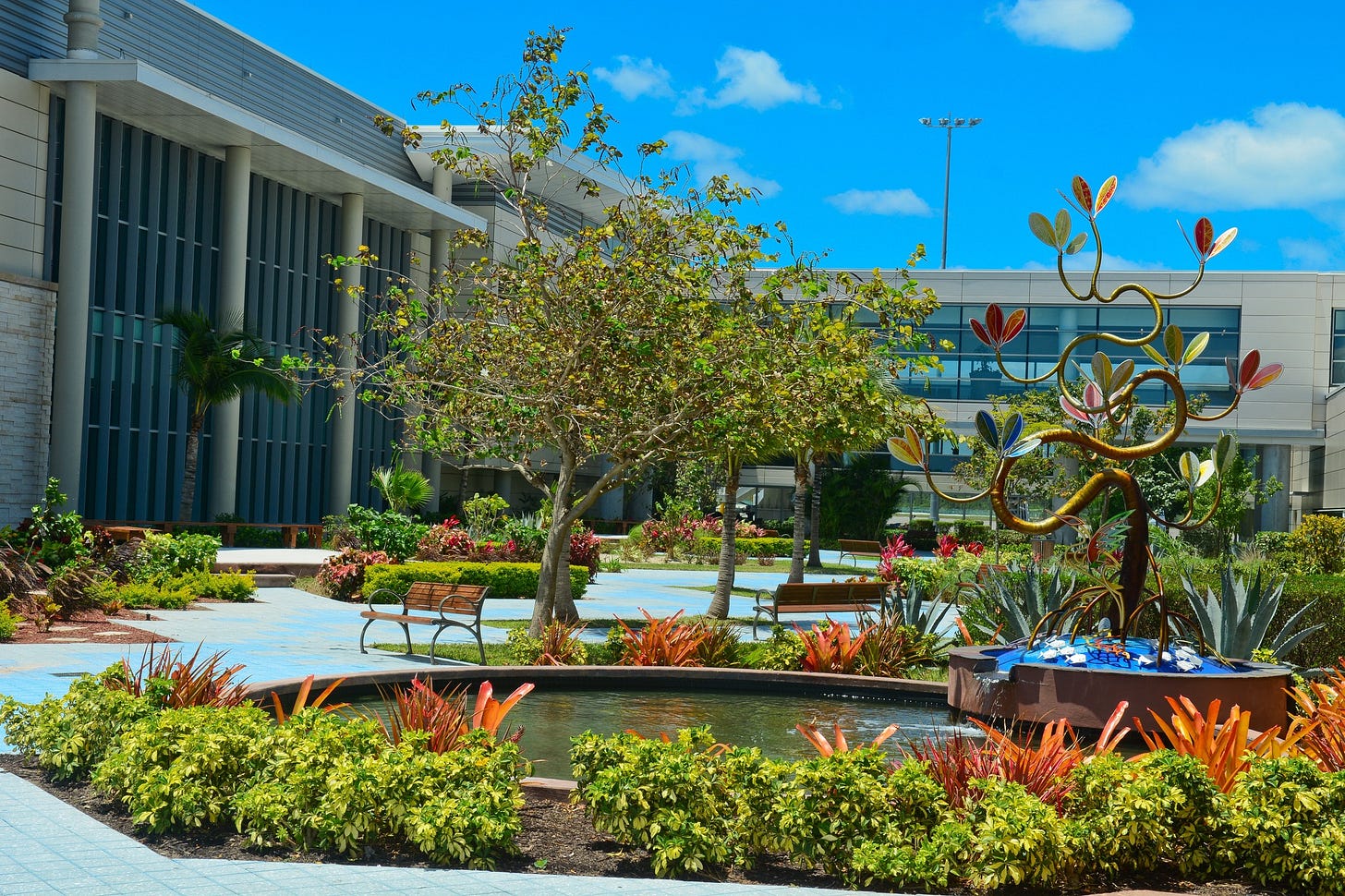
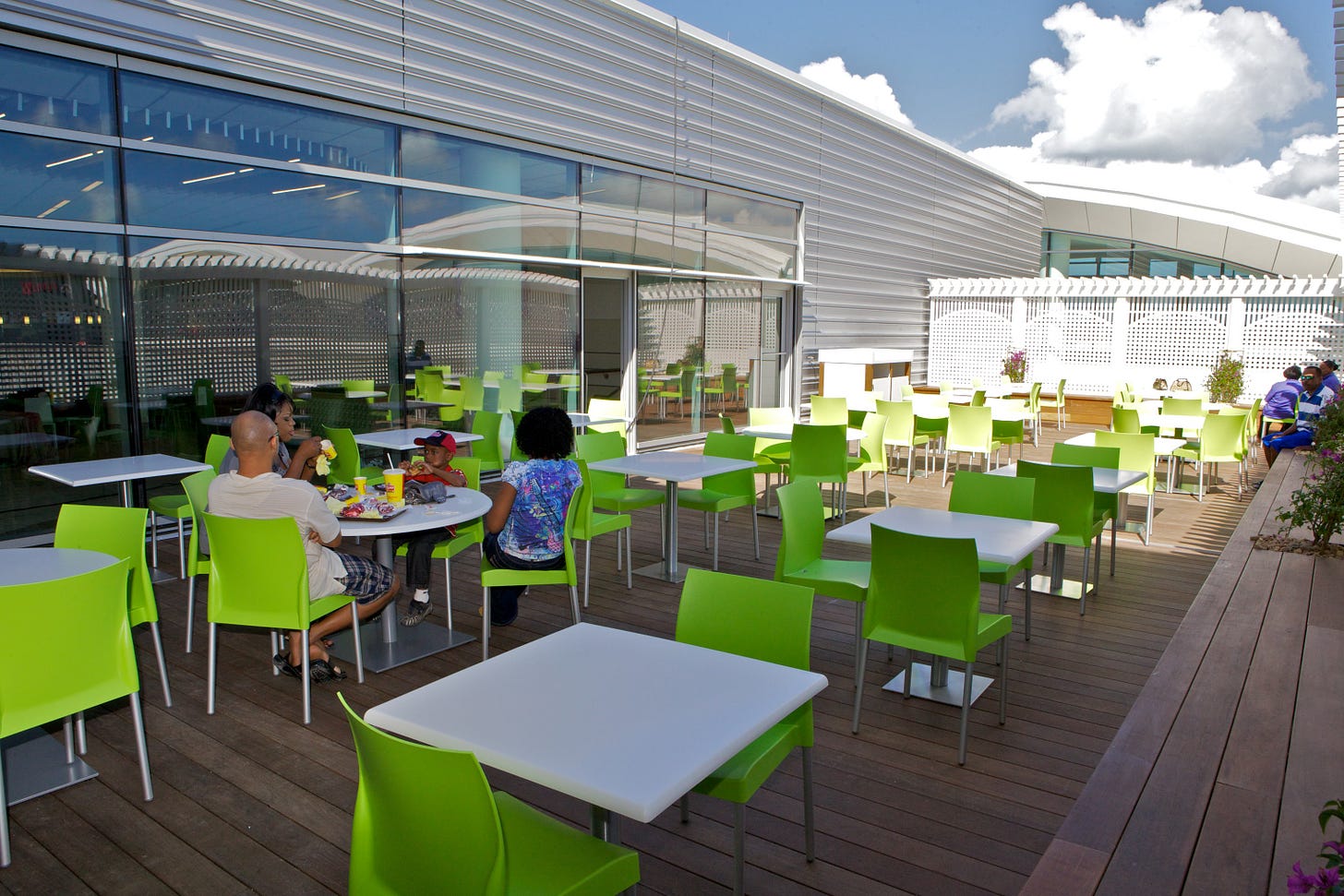
I visited Nassau last February. I found little to enjoy about the airport as a passenger.
True, the walk to the border control area wasn't long, but the wait to clear customs/immigration was interminable. I'd gladly take a utilitarian concrete box if that meant the airport would invest in "e-gates" or other solutions that would support expediting the border crossing process.
Departing NAS, the wait to enter and clear the US CBP pre-clearance area was, again, marred by long lines (not the airport's fault) in a dirty area that would have benefited from more light color and art (within the control of the airport). Once into the departure area, I was disappointed by the facility's generic design and feel. I felt like I could have been anywhere. I was departing after lunch, so wasn't hungry, but the food concessions were uninspiring (and, from what other family members told me, expensive and poor quality). Gate seating, as you noted, was bland and inadequate. Again, color and local art would have been helpful. I did enjoy the large - and (relatively) clean windows - both for the light they allowed into the terminal as well as for the tarmac views.
I didn't know the airport offers an open-air terrace. I'm not sure if it was open last February or not well indicated on the airport's terminal maps and wayfinding signage. Sitting outside on a lovely Bahamian afternoon would have made the wait far more pleasant.
Very few people visit a destination because of its airport(s), but an airport contributes to the first and last impressions of a destination. Nassau is a lovely place to visit. The arrival and departure experiences for US visitors, however, undermines its charm.